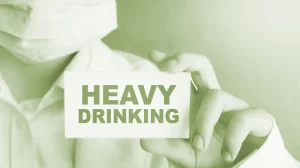
Opioid withdrawal symptoms include diarrhea, Methadone Withdrawal nausea and vomiting. Healthcare providers use opioid withdrawal medications to ease these symptoms. Methadone alleviates opioid withdrawal symptoms and reduces cravings.

What is Methadone Misuse?

You may need to slightly increase the dose again to relieve intense withdrawal symptoms. Tapering methadone means gradually taking smaller doses over several weeks or months. Although tapering is considered the best way of detoxing from methadone, it can still be challenging. You may still experience withdrawal symptoms each time your dose is cut. By working closely with a physician, you can extend your taper timeline and reduce your dose by smaller increments if necessary.
Supplementary Table 1 and Supplementary Figure 1

It’s often a very helpful and effective treatment for those who need it for this purpose. Whether you’ve been prescribed methadone for opioid dependency or for pain relief, withdrawal symptoms can occur as you taper off this medication. In some cases, your healthcare team may prescribe other medications to help combat the symptoms of withdrawal. Symptoms of methadone withdrawal may be less severe and take longer to set in than withdrawal symptoms of other opioids. The best way to avoid methadone withdrawal is to try to take the medication exactly as prescribed.
- We do not receive any commission or fee that is dependent upon which treatment provider a caller chooses.
- Our study found that lack of adequate prenatal care increased the likelihood of pharmacologic intervention.
- Research shows that roughly three in four people who complete opioid detoxification relapse within two to three years.
- The Short Opioid Withdrawal Scale (SOWS, p.37) is a useful tool for monitoring withdrawal.
- Symptomatic treatment can be used in cases where residual withdrawal symptoms persist (Table 3).
- Opioid withdrawal isn’t life-threatening, but it can make you feel very sick.
- However, it can take anywhere between 15 and 60 hours for methadone to be out of a user’s system.
Certification of Opioid Treatment Programs
Mr. Zhuopei Hu had full access to all of the data, is responsible for the accuracy of the data analysis, and critically reviewed the manuscript for important intellectual content. Dr. Barry Lester participated in the concept and design https://ecosoberhouse.com/ of the study, interpreted the data and critically reviewed and revised the manuscript for intellectual content. Ms Lynne M. Dansereau participated in the concept and design of the study, interpreted the data and critically reviewed and revised the manuscript for intellectual content.

You may have a fatal methadone overdose if you start or stop using certain other medicines. Tell your prescribing doctor about all medications that you take. Fatal side effects can occur if you use opioid medicine with alcohol, or with other drugs that cause drowsiness or slow your breathing. If you have or think you may have opioid use disorder, your provider will ask if you want treatment like cognitive behavioral therapy. Inhalant withdrawal symptoms can begin anywhere between a few hours to a few days after ceasing inhalant use. Symptoms may last for only 2-3 days, or may last for up to two weeks.

- If you or someone you love is struggling with a methadone addiction, contact a treatment provider today to discuss available treatment options.
- Tapering over time can help lessen withdrawal symptoms or keep you from having them.
- Read on to learn more about withdrawal signs and symptoms, as well as their timeline.
- The greater the amount of opioid used by the patient the greater the dose of methadone required to control withdrawal symptoms.
You might need to take a drug screening as well to help verify a diagnosis for your baby. Neonatal abstinence syndrome (NAS) can be difficult to quantify since the number of cases continues to increase each year. One study suggests there is one newborn diagnosed with NAS every 25 minutes, which equals between 2 to 7 newborns out of every 1,000 births. But even if the federal rules are put into wide practice, many addiction doctors and advocates say they don’t go far enough.
- The duration of the process varies from person to person, but may last anywhere from 2-3 weeks up to 6 months.
- Patients should be monitored 3-4 times daily for symptoms and complications.